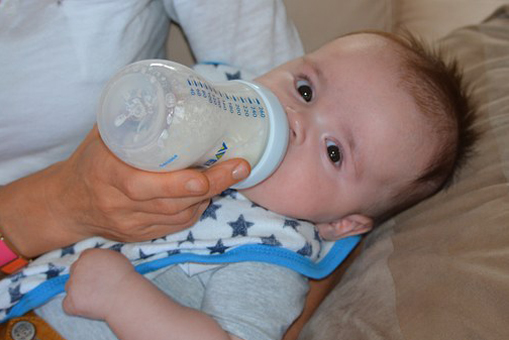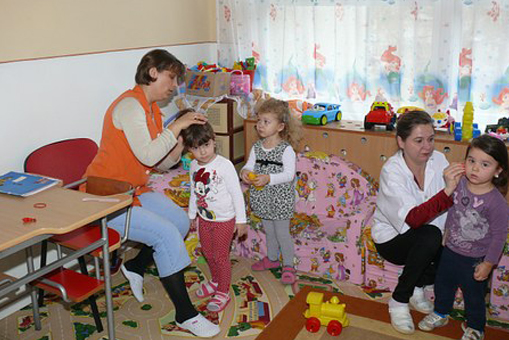We want to create a long-term relationship of trust and health with parents and children
You are facing a new beginning, and every beginning is full of doubts, fear, uncertainty and new challenges. Right now, you are the most important person in your child’s life. This is precisely why mothers – especially first-time mothers – tend to worry about and fear for their children in the postnatal period. All of this can interfere with the process of learning how to breastfeed, but with a positive attitude, some practice, persistence and support, almost every mother can successfully establish breastfeeding. An important prerequisite for successful breastfeeding is early contact between mother and child – so-called skin-to-skin contact – which should occur immediately after birth and last for at least 60 minutes. There are other prerequisites as well, which we will explain here.
It is important to know that milk production already begins during pregnancy, while lactation occurs after delivery. The first stage of breast milk is called colostrum. This is a thick, yellowish, somewhat sticky milk with a high percentage of immunoglobin and antibody proteins. This means its primary value lies in protecting the child from infections, which is why it is important that the infant consumes as much of it as possible during every meal. It is produced in small amounts: only 5 to 15 ml per meal. It is rich in energy and its amount and contents satisfy all the needs of a healthy infant during the first two to three days of life, provided the mother and child are together and the mother breastfeeds “on demand”. Breastfeeding “on demand” implies breastfeeding without limitations in terms of number or duration of breastfeeding sessions (10 to 12 or more in 24 hours).
Another prerequisite for successful breastfeeding is the proper breast latch. Before you begin breastfeeding, wash your hands and try to relax and assume a comfortable position. Focus your thoughts on the baby. Touch the baby’s lips with the nipple and wait for the baby to open wide. Use your hand to bring the baby closer to the breast – the baby will know what to do.
Regardless of its position, breastfeeding should not be painful. Make sure the nipple and part of the areola (the dark ring around the nipple) are deep in the child’s mouth, so the child does not damage it (creating rhagades) while sucking.
Two to three days after delivery, you will feel a change in your breasts. This feeling of fullness is the result of increased lactation. It is important to frequently offer the breast to the child in order to help your body produce the amount of milk necessary for breastfeeding during the first six months.
Following the colostrum, so-called “transition milk”, which contains increasing amounts of fat and carbohydrates, is created between the fourth and fourteenth day. During each breastfeeding session, offer the child one breast; when the child releases the nipple, offer the other breast. The child will usually suck less milk from the second breast. For the following meal, always offer the less “empty” breast.
After three weeks, the fullness in the breasts is less prominent as the production of so-called “mature” milk commences. The contents of breast milk change: at the beginning of breastfeeding, the child consumes “first milk” which appears more “watery” and contains more water and carbohydrates, thus satisfying the child’s need for fluids. This is why breastfed children should not be given water, tea, etc. As the breastfeeding progresses, the milk contains more and more fat (so-called “final milk”, which is thick and yellowish). Consuming more fatty milk creates a feeling of fullness and satisfaction in the child.
Having spent some time with your child, you’ve got to know the child’s temperament, behaviour and needs, which makes it easier for you to recognise early signs of hunger (the child turns his/her head, opens his/her mouth, brings his/her hands towards the mouth, seems uneasy, makes slurping noises, etc.). This is a good time to offer the breast; if you postpone this until the child is already crying, you may have difficulties releasing milk. The child responds to this by crying or moving away from the breast.
The duration of breastfeeding sessions usually varies, which is perfectly normal. It can last 10, sometimes even up to 30 minutes. It is important to observe the child’s actions: is the child actively sucking or merely imitating sucking by moving the lips while asleep?
In some situations, breastfeeding sessions can last for a long time – for example, if the child does not assuming a proper position, in the case of prematurely born infants, infants with low birth weight, infants with difficulties, or sick infants.
When breastfeeding, focus exclusively on that task. Try to ensure all available help from your surroundings. Tell your visitors not to bring gifts but do you favours instead: prepare a healthy lunch or a treat for you, clean your flat, do your laundry or your shopping. The parents’ immediate family usually provide the most help. The father/partner plays the most important role in this period, especially if he is familiar with the benefits of breastfeeding and has a positive attitude towards it. By joining forces and acquiring information in advance, it is easier to separate acceptable advice on breastfeeding from unwanted or outdated tips, which may have a negative effect on the mother’s self-confidence in this sensitive period.
As you breastfeed, you are transferring a feeling of security, warmth and protection to the child, which is why it creates a special relationship between you. The mother’s milk is unique and unrepeatable, just like your child, which is why your joint journey through breastfeeding should last as long as possible. Ultimately, the benefits of breastfeeding are important not only for both of you, but represent so much more, too.
Read more about successful breastfeedeng ON THIS LINK






